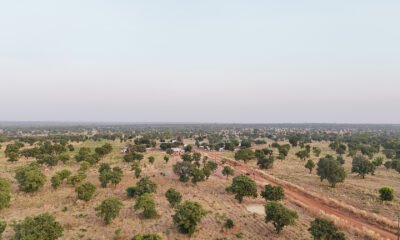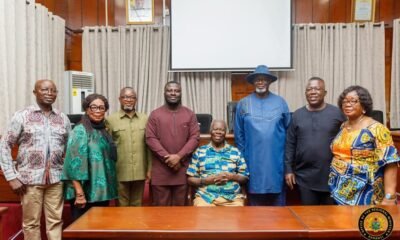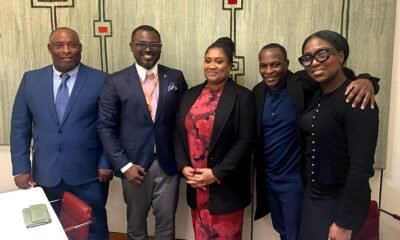Profile
Kyeremaa clearing disability barriers …to win Ghana’s first taekwondo gold from Paralympic Games
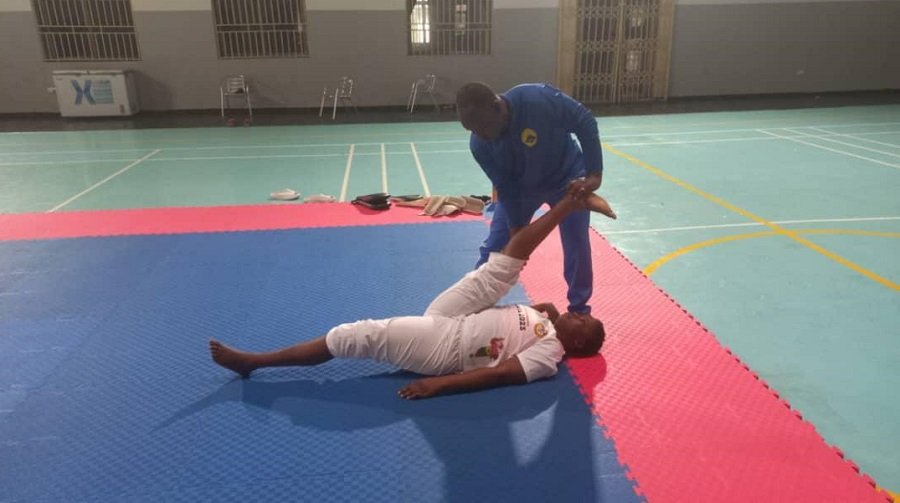
Time to do a few stretches
It is exactly seven years ago when a Techiman based disabled seamstress, Ms Patricia Kyerewaa, decided to heed to persuasions from a friend she referred to as ‘Uncle’ (Bro Dan) to begin a career as a para (disabled) taekwondo athlete.
And that has proven to be a decision without regrets although there was an initial rejection from her parents. Now all she enjoys from them is their unwavering support.
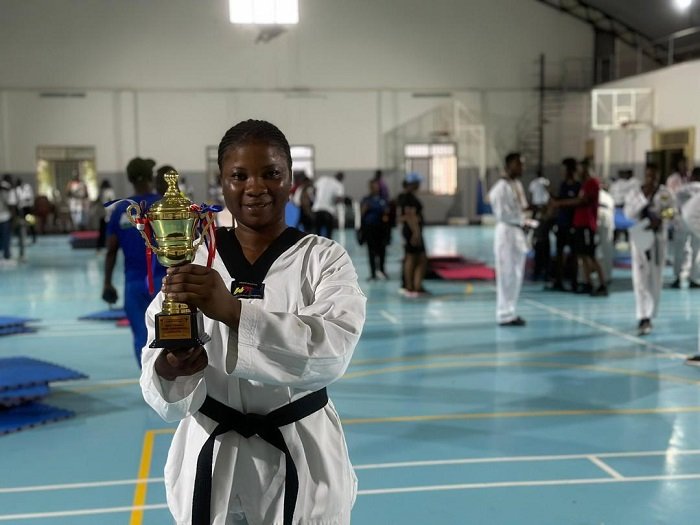
It was one afternoon in her shop, working with thread and needles to put together some decent clothes for her customers when Bro Dan came around, asking about her thoughts on a discussion they had previously.
“Is it about the discussion for me to join a taekwondo club?” Kyeremaa quizzed.
And Bro Dan gently responded: “Yes, I have waited for you to call me to let me know your response.”

To Bro Dan’s surprise, Kyeremaa responded in the affirmative and right away, they travelled from Techiman to Sunyani in the Bono region to meet the one who happens to be her current coach, George Ablomoti.
That was the story behind Kyeremaa’s journey in the world of taekwondo as a para athlete.
Just seven years down the line, Kyeremaa is knocking on the doors of fame, having carved a niche for herself as the first and only para taekwondo athlete in Ghana’s Paralympic team for the Paris 2024 Paralympic Games that is slated for August 28 to September 8.

For that feat, she gives credit to the National Paralympic Committee (NPC) of Ghana which applied for the Wild Card on behalf of the Ghana Taekwondo Federation (GTF) for her and a second athlete, Emmanuel Kofi Turkson.
However, the International Paralympic Committee (IPC) approved that of Kyeremaa and failed to grant the request for the other.
As a Person Living with disability (PLWD), Kyeremaa opted to learning a skill to be able to fend for herself after completing Junior High School (JHS) at Akumadan SDA, knowing the challenges one faces as a PLWD in Ghana.

But the busy schedule of an athlete preparing for a competition of this magnitude is not making it possible for her to practise her trade; presently she is in residential camp in Tema.
As it is with every venture, she recounted initial struggles in trying to adapt to the demands of the sport.
“It was quite challenging from the beginning. I was not a sports person and didn’t understand why Bro Dan kept persuading me to become a taekwondo player but with time, I adjusted,” she told this Reporter.
“I feared the sack after the initial struggles but to my knowledge, it was actually the coach who tasked Bro Dan to convince me to join, actually spurred me on; and it is that confidence and hard work that keeps me going.”
“Honestly, I put in all the hard work but was not quite sure where this venture would land me.”
Kyeremaa has gone onto record with a few achievements which she hopes to climax with a gold medal at the upcoming Paralympics in Paris.
The story about her success started with a big bang; registering a gold medal feat in the 2017 edition of the Korea Ambassador Taekwondo Championship among six other contestants.
She continued to dominate in the championship as she won a second gold and silver medals in subsequent championships.
Her dominance extended to the Africa region where she recorded Ghana’s first gold medal at the Africa Championship, Niger 2022, bringing home a medal and a beautiful trophy.
That earned the 29-year-old athlete qualification to the France Grand Prix in 2022 but out of the huge numbers, she placed a respectable ninth position.
That was, however, not her biggest disappointment. Failure to qualify to the Paralympics 2024 championship via the regular route still hunts her.
In all that she has achieved in the sport, the support she keeps enjoying from officials, family, coach and fans has kept her at the top.
“For my family, I am grateful to them. They were initially against it but now they are convinced I am on the right path. Through para taekwondo, I have travelled to Accra, France, Niger, Senegal and still going,” she remarked.
“The Ghana Taekwondo Federation (GTF) board spearheaded by Mr Frederick Lartey Otu, a Chief Revenue Officer with the Customs Division of the Ghana Revenue Authority (GRA), and the para taekwondo sub-committee chaired by Rev. Samuel Annor cannot be left out. They have played instrumental roles in my development,” she added.
For the future, she sees it as quite encouraging although she would quit to marry her sweetheart at some point and focus on family life.
In her view, sports financing has been left on the shoulders of individuals like the various federation heads and that is not good enough.
For her fellow disabled, Kyeremaa believes there is so much they can do to stay relevant in order to make them useful to the society.
“Until I started taekwondo, I didn’t know sports accommodates people with disabilities. The same thing is happening with other disciplines so I want to encourage other disabled people to engage in sports. They should identify the discipline with interest and get on board,” she noted.
“So, instead of making themselves burdens on society and families, they should strive to do something positive with their lives because disability must not mean the end of the world for them.”
By Andrew Nortey
Profile
Prisca Abah: Ghana’s modelling powerhouse

Ghanaian model, philanthropist and advocate, Prisca Abah, who is known for her contributions to the fashion industry, is strutting her stuff on higher levels.
She was recently selected as one of the models for the Big8 Girls Project, an initiative by Clinton Samuel to celebrate influential African models.
The project consisted of three episodes: the Bio Shoot which highlighted Abah’s professionalism through a corporate-themed photoshoot; Afrodeity which focused on showcasing her confidence and artistry, celebrating the African divine feminine and royalty which presented Abah as a symbol of African cultural pride, embodying strength and elegance.

The Big8 concept, produced by Clinton Samuel, intentionally highlights and celebrates the strongest and most influential models on the African continent, congratulating their steadfastness and contributions to the African fashion industry, even as they grind and win in other aspects of life.
The Big8 sets hierarchy and high standards in the African fashion and modelling industry, crowning eight of them with the ‘Top Model’ status as the leading female models in Ghana at the moment.
“Working with these fiery women will surely ignite more creative minds and stir the pot of positive competition,” said Clinton.

Abah’s early life and career
Prisca Abah began her modelling career in 2013, achieving her first notable milestone in 2014 with an editorial shoot for 5-Star International Modelling Agency. In 2015, she made her runway debut at the Ghana Fashion Awards.
From 2016 to 2018, Abah participated in major African fashion events such as Glitz Africa Fashion Week, Mercedes-Benz Fashion Week in Johannesburg, and Rhythms on the Runway.
During this period, she received accolades, including the “Best Female Model of the Year” and spoke as a UN Ambassador for Sustainable Development Goal 12 at the Sustainable Rice Platform Conference.
International recognition and pageantry
In 2022, Abah expanded her reach by entering the pageantry world. She placed as the first runner- up at the Beauty of Africa International Pageant and represented Ghana at the Miss Globe World Finals, where she earned the title of Miss Globe Africa 2022.

Philanthropy
Abah founded the Palins Foundation, a non-profit organisation, aimed at empowering women and youth through initiatives in education, skills training, and personal development.
Awards and collaborations
In 2023, Abah received the Best Model of the Year award at the Time Ghana Arts and Entertainment Awards. She has collaborated with leading designers such as Charlotte Prive and Ejiro Amos Tafiri, further solidifying her influence in African fashion.
Legacy
Prisca Abah is recognised not only for her contributions to the fashion industry but also for her philanthropic efforts. Her journey serves as an inspiration to young Africans, encouraging them to pursue their dreams while giving back to society.
By Edem Mensah Tsortorme
Profile
Juventus Duorinaah, Ghana’s first deaf Lawyer
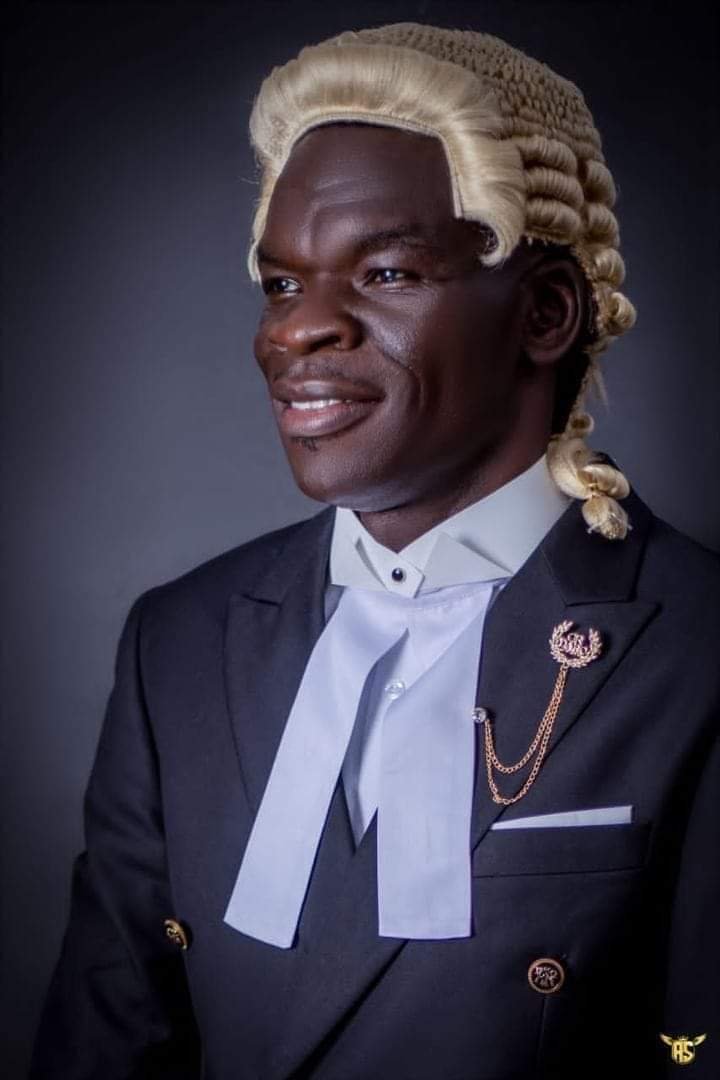
In a landmark moment for Ghana’s legal landscape, Juventus Duorinaah Esq., has etched his name in history as the country’s first lawyer with a hearing impairment.
His journey from a humble background to breaking barriers in the legal profession serves as a powerful inspiration for countless individuals in the disability community, proving that determination and resilience can defy societal expectations and create pathways to success.
For Juventus, the recognition as Ghana’s first deaf lawyer feels surreal.
“It feels like a dream,” he reflects, acknowledging the stereotypes surrounding deafness and the humble background from which he hails.
Juventus’ passion for law sparked in 2008 while seeking admission to the University of Ghana (UG). Although he initially faced challenges due to the nature of the application process, the help of his older brother and his determined spirit led him to pursue a Bachelor of Arts degree in 2012, followed by a Master of Laws at Cardiff University in 2014.
His passion for the study of law became highly intense when he had to study alongside qualified lawyers from several jurisdictions, even though he did not have a legal background. Here, he faced the unique challenge of studying without sign language interpreters, relying instead on a palantypist to transcribe lectures.
Juventus’ role model was his professor and mentor, Professor Luke Clement, who profoundly inspired him in shaping his understanding of law and human rights.
He remembers Prof. Thomas Stephens from the University of Ghana School Of Law, who inspired him with his way of dressing, in-depth knowledge of the law and engagement with students.
He recounts the enormous challenges he encountered during the COVID-19 pandemic in 2020, when lectures moved online, and Dr Stephen’s tremendous support to ensure things moved quickly and smoothly for him.
“I also had the chance to have a few classes with the Dean himself, Prof. Raymond Atuguba. He taught the course such that some of us never felt scared as other lecturers made the course,’ he recalled.
Juventu’s academic journey was fraught with challenges, particularly in communication.
The year 2007 was the last time he studied with deaf peers. He was often the only deaf person in his classes throughout the following years of his education, which made interaction with peers difficult.
Despite these hurdles, he remained high-spirited, studying late into the night and seeking help from kind classmates when necessary.
Reflecting on his academic experience at UG, he connected his affection for the university to his older brother, who is also an alumnus. He felt inspired to be a student of the premier university, saying he would choose the University of Ghana any time, any day, if given the chance to further his studies or work.
The University Of Ghana School Of Law, along with its Dean, Professor Raymond Atuguba, the Director of Legal Education of the Ghana School of Law, Yaw Bramiah Oppong, and his capable team, including the Registrar and Deputy Registrar of the Ghana School of Law and the Office for Students with Special Needs (UG), made significant contributions to his journey.
Prof. Atuguba acknowledged Juventus’ achievement as evidence of the university’s commitment to Diversity, Equity and Inclusion.
Commenting on how the school accommodated his special needs, Prof. Atugugba explained that ‘In the case of Juventus, we worked closely with him to understand and address his special needs, ensuring he had access to the teaching and learning resources in the appropriate formats that would support his academic journey.
Professor Atuguba noted that Juventus’s journey is just beginning, and the future holds promise for him and the many lives he aims to touch along the way.
Juventus’s close friend, Ida Esi McOwusu Esq., described her first encounter with Juventus as ‘intriguing.’ “My first meeting with Juventus was in class, where he sat right in front of me in first year,” Ida reveals. She was intrigued and wanted to find out more about him, especially how Juventus navigated his way to this level. “I got closer and we became friends from there,” she remarked.
Mr Francis Kweku Essel, Juventus’ interpreter, shed light on the primary challenges he faced in carrying out his job, particularly the complex nature of legal terminology and concepts. This validates Ida’s comment on the interpreters’ lack of legal background as a challenge Lawyer Duorinaah encountred.
Juventus dreams of becoming a judge and aims to enhance justice delivery while serving as a role model for young people with disabilities.
He is currently mentoring a group of young deaf students interested in pursuing law, hoping to pave the way for future generations. What’s next for Lawyer Juventus? His next step is to complete his pupilage, after which he can decide further his legal career.








